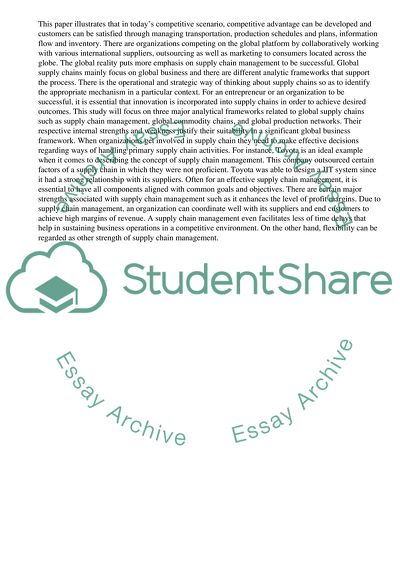Cite this document
(“Strengths and Weaknesses of Different Analytical Frameworks to Global Essay”, n.d.)
Retrieved from https://studentshare.org/business/1663129-evaluate-strengths-and-weaknesses-of-different-analytical-frameworks-to-global-supply-chains-supply-chain-management-scm-globalcommodity-chains-gccsand-global-production-networks-gpns
Retrieved from https://studentshare.org/business/1663129-evaluate-strengths-and-weaknesses-of-different-analytical-frameworks-to-global-supply-chains-supply-chain-management-scm-globalcommodity-chains-gccsand-global-production-networks-gpns
(Strengths and Weaknesses of Different Analytical Frameworks to Global Essay)
https://studentshare.org/business/1663129-evaluate-strengths-and-weaknesses-of-different-analytical-frameworks-to-global-supply-chains-supply-chain-management-scm-globalcommodity-chains-gccsand-global-production-networks-gpns.
https://studentshare.org/business/1663129-evaluate-strengths-and-weaknesses-of-different-analytical-frameworks-to-global-supply-chains-supply-chain-management-scm-globalcommodity-chains-gccsand-global-production-networks-gpns.
“Strengths and Weaknesses of Different Analytical Frameworks to Global Essay”, n.d. https://studentshare.org/business/1663129-evaluate-strengths-and-weaknesses-of-different-analytical-frameworks-to-global-supply-chains-supply-chain-management-scm-globalcommodity-chains-gccsand-global-production-networks-gpns.


